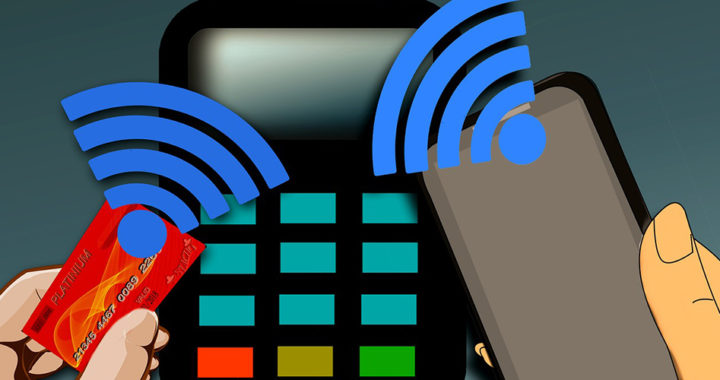Near Field Communication or NFC is a wireless communication protocol and technology based on the use of radio waves within the globally available and unregulated 13.56 MHz frequency band. Take note that NFC is a specialized subset of Radio Frequency Identification or RFID technology.
The fundamental working principle behind NFC is simple. It is a technology that allows consumer electronic devices such as computers and smartphones to exchange information wirelessly across a small distance. Some of these devices can also read and process information contained within NFC-enabled objects such as keycards and tagged identity documents.
Pros: Benefits and Advantages of Near Field Communication
1. Convenient and Versatile Wireless Technology
One of the notable benefits or advantages of near field communication revolves around its simplicity and expansive applications. It is easier to set up and deploy than Bluetooth because it does not require pairing or manual configuration. The connection is automatic and takes a fraction of a second. It also uses less power than other types of wireless communication technologies.
Some of the common applications of NFC include wireless data transfer, contactless payment, and digital identification. A promising application of NFC involves support for the Internet of Things or IoT. NFC specifically supports the creation of a network of computing devices, appliances, vehicles, and equipment or machinery by enabling fast and easy wireless connectivity.
Note that NFC also allows not just two-way communication but also one-way communication. Devices equipped with NFC technology can function as electronic identifier devices that can read and process embedded data or information from NFC-tagged objects.
2. Bootstrapping Other Wireless Connections
The fact that NFC is easy to set up and deploy enables it to be used for bootstrapping or initiating connections using more capable wireless connections such as Bluetooth and Wi-Fi. Note that Bluetooth necessitates pairing of two or more devices while most Wi-Fi networks require manual configurations. These setup processes can be tedious.
Because NFC establishes communication between two devices in a more straightforward manner than other types of wireless communication technology, it can send and receive digital identity markers easier and faster.
Android Beam uses NFC technology to pair two Bluetooth devices for quick file transfer. It also automatically disables the connection upon completing the file transfer. Samsung has developed an extended application of Android Beam called S-Beam in which NFC is used to shared MAC address and IP addresses to establish a Wi-Fi Direct connection for sending and receiving data at a faster rate than Bluetooth.
3. Contactless Solution in Payment Systems
Another remarkable advantage of NFC is that it supports the widespread application of contactless payment systems. Several companies have implemented payment transactions based on this technology.
For example, Apple announced in 2014 that its Apple Pay now supports NFC-based transactions. MasterCard Incorporated NFC support in its PayPass system for the Android OS and BlackBerry platforms in 2012 while Visa Inc. partnered with Samsung to launch payWave application in Samsung Galaxy smartphones beginning in 2012.
There are specific benefits from using NFC technology in payment systems. First is that it promotes security from identity theft through wireless or contactless transactions. It also fosters convenience by encouraging the use of cashless and mobile-based transactions.
Cons: Limitations and Disadvantages of Near Field Communication
1. Slower Connectivity and Limited Range
A critical limitation or disadvantage of near field communication is that it is not as effective and efficient as Bluetooth or Wi-Fi Direct when it comes to data transfer rates. NFC can only send and receive very small packets of data. Its maximum transfer rate is 424 kbps while Bluetooth 2.1 has a transfer rate of 2.1 Mbps. In other words, it does not actually support the transfer of large data such as multimedia files.
Limited range is also another drawback of NFC. Its maximum working distance is 20 centimeters or about 7 inches while Class 1 Bluetooth has a maximum range of about 100 meters and Bluetooth Low Energy has a maximum range of 50 meters.
However, because NFC can be used for bootstrapping more capable types of wireless communication between two devices, it essentially serves as a technology for supplementing other wireless communication technologies such as Bluetooth and Wi-Fi Direct.
2. Vulnerabilities Due to Security Issues
Manufacturers of NFC modules and NFC-enabled devices have included encryption and authentication considerations to promote security and data protection. However, plain NFC is vulnerable to man-in-the middle-attacks or eavesdropping because it does not guarantee a secured communication due to the absence of encryption and authentication.
Radio signals generated by an NFC device can be picked up with antennas of other devices from a typical range of less than 10 meters. Active NFC devices are more prone to eavesdropping. On the other hand, passive NFC objects are harder to eavesdrop because they do not generate their own radio signals.
The shorter operational range of NFC also makes it prone to intentional or unintentional signal interferences. Disruptions can result in failed communications between two NFC devices.
3. Cost Implications from Shortcomings
It is important to note that another advantage of near field communication is that it is cheaper to manufacture than Bluetooth and Wi-Fi direct. Its hardware components are simpler. Remember that it also consumes less power than other wireless communication technologies. An NFC device can function without a battery using only small photovoltaic cells.
However, because NFC is also used to supplement Bluetooth, Wi-Fi Direct, and Wi-Fi networking, its cost advantage is essentially lost. NFC is not an ideal standalone wireless communication protocol in certain applications such as in computers and smartphones. In these instances, the low cost of NFC is lost.
NFC is also costly when compared to RFID and other types of electronic identification and tagging. Tracking and identification systems using barcodes or quick response or QR codes are easier to develop and implement than NFC. On the other hand, standard RFID has cheaper hardware and setup costs than NFC because it is a less-advanced technology.

